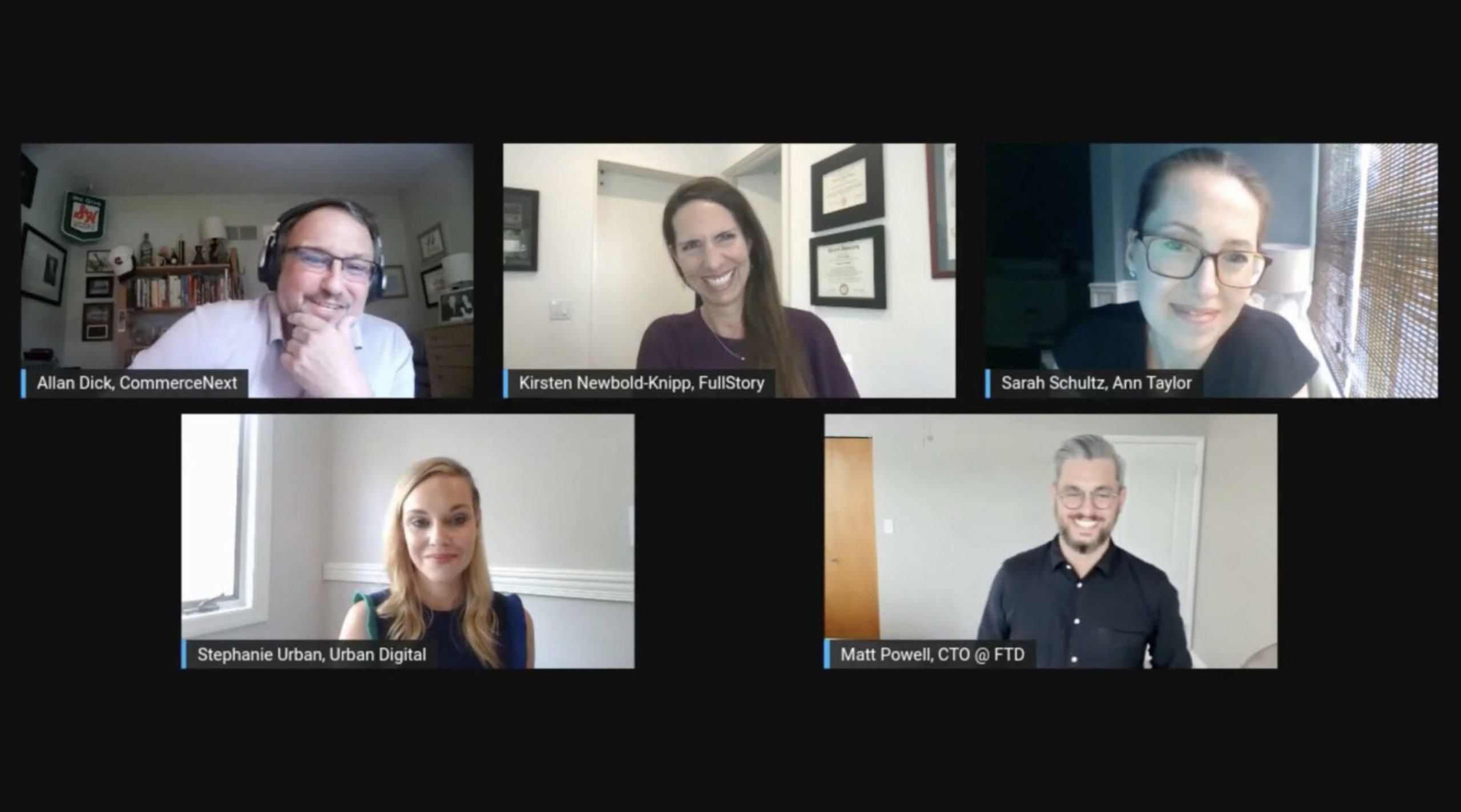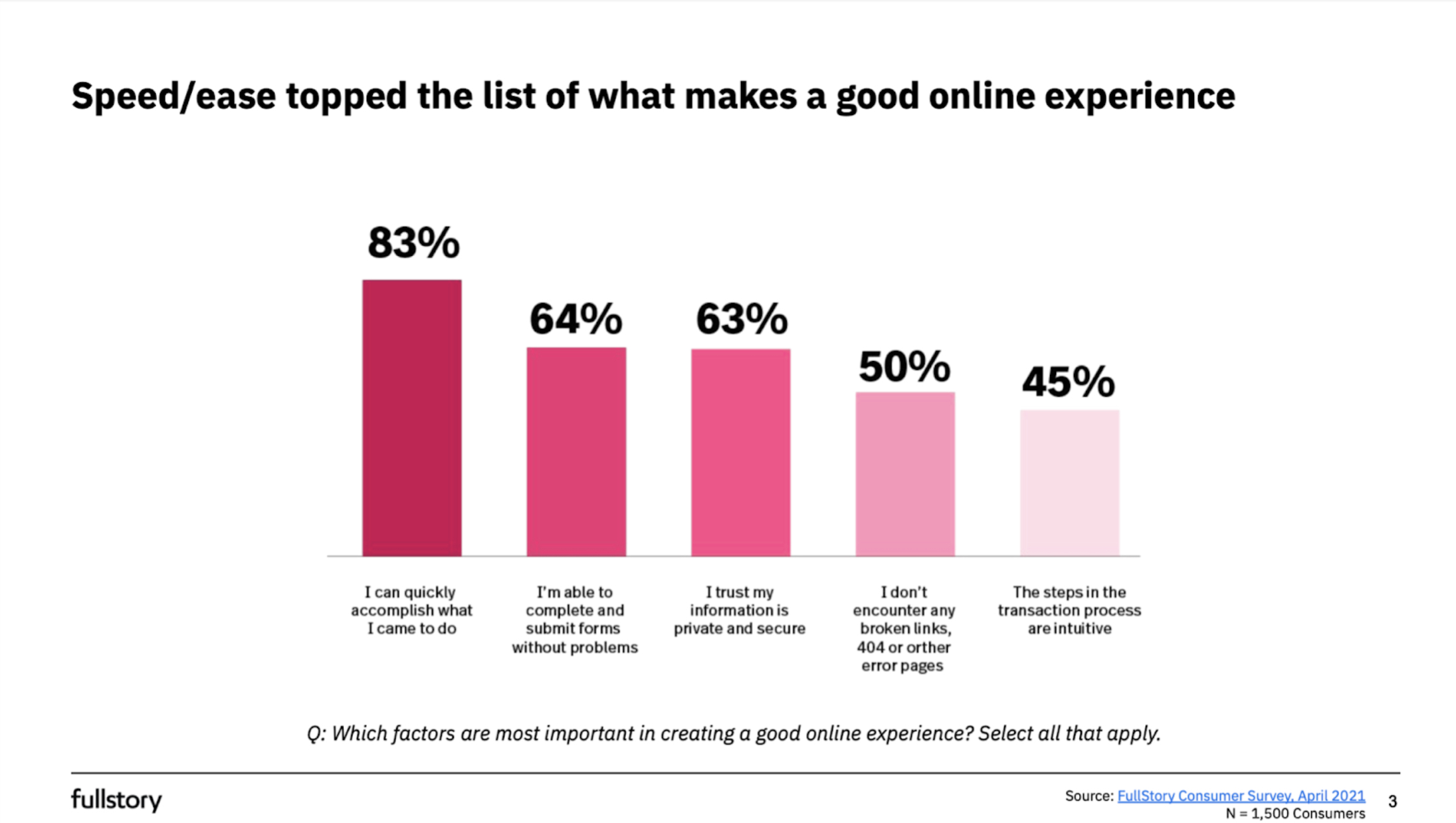Making data-driven changes to your ecommerce site will build the most accessible and effective ecommerce experience for your customers. But, demands for privacy and security from your customers mean finding new ways to access their data. In a recent webinar hosted by CommerceNext, we heard from Sarah Schultz (AVP – Ecommerce Product Management & Web Operations, Ann Taylor), Matt Powell, (Chief Technology Officer, FTD) Stephanie Urban (VP eCommerce, Urban Digital) and Kirsten Newbold Knipp (CMO, FullStory) on how to make this all happen.
Watch the replay here or read the recap below.

FullStory Presentation: What’s Driving Customers To Jump Ship
In a customer survey conducted in April 2021, FullStory learned that customers want to quickly and seamlessly accomplish what they want to get done. In the graph below, FullStory outlined the factors of ecommerce experience that are most important to customers.

Topping the list for customers is efficiency. Customers left frustrated from faulty ecommerce tools (e.g. a button that’s supposed to perform a certain action but does not work or errors out) sometimes turn to rage clicks, which in turn, create a data headache for the retailer. Additionally, 91% of customers will abandon a brand they love after one bad experience without leaving any note or explanation through the website.

Locating the right insights comes from a combination of understanding what data should be used and why. The “what” data or, “quantitative data” shows what is happening, providing answers to questions and/or helps you influence outcomes. On the other hand, the “why” data is qualitative, and helps illustrate why something is happening, thereby validating your hypothesis and providing direction or next steps.
Panel Discussion: Top Brands Weigh In On Their #1 Site Priority
Engaging with different customers in different ways is a big part of FTD’s customer personalization strategy. They consider the individual needs of their customers and attempt to use data to respond to those needs differently. Additionally, the data they use for this personalization is a combination of success metrics and diagnostic metrics.
Ann Taylor has discovered, “If [the product] doesn’t arrive on time, they aren’t going to shop with you again, no matter how much serotonin they get out of your browse session.” This means that every level of the customer journey has to be effective in order for them to be satisfied with the brand.
When it comes to differentiation, Ann Taylor believes, “Differentiation for differentiation’s sake should never happen in ecommerce, especially during check out.” All panel members recognized that check out is such an important and fragile part of the ecommerce process. They work with data to figure out what their customers are using at check out, and keep it simple for them.
Urban Digital uses LTV as one of their most valuable metrics when it comes to testing personalized customer experience. Additionally, they view it from a 360-degree perspective in order to ensure all pieces of their brand are aligned.
Customer experience should be a focus throughout the customer journey, from the second shoppers enter a website to when the package arrives at their doorstop. All audiences and brands are different, but ease of experience and checkout efficiency counts for every customer. If you can nail those, you’re already off to the retail races.
Related Posts
-
Consumer Experience: What Every Retailer Needs To Know
A guide to how consumer behavior is shaping retail and…
-
STORY Demonstrates Customer Experience is The Future of Retail
How does offline customer experience impact retail in the digital…
-
How Retailers Are Investing In Digital Customer Experience
Time is the most precious resource. Within our twenty-four hour…




